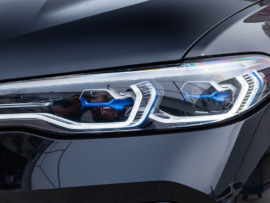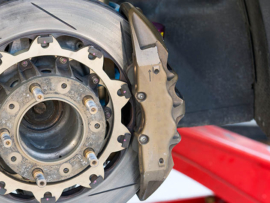This OBD-2 fault code P0400 indicates issues with the EGR system, essential for reducing harmful emissions. It is triggered when the PCM (Powertrain Control Module) identifies an anomaly in the volume of exhaust gas rerouted to the inlet tract. This issue results in the storage of a trouble code and illumination of a warning light.
Purpose of the EGR System
The EGR system, present in both gasoline and diesel engines, recirculates a portion of exhaust gas into the inlet tract, becoming part of the air/fuel mixture. This process dilutes the mixture, lowering combustion temperatures and reducing nitrous oxide formation – a major component in smog.
How EGR Systems Work
- Spark Ignited Engines (Gasoline). Here, only up to about 10% of exhaust gas is recirculated to prevent misfires. The system is deactivated at idle and high engine loads to maintain optimal combustion. The EGR also cools exhaust valves, prolonging their life. Adjustments in ignition timing by the PCM can counteract adverse effects of recirculated exhaust gas.
- Compression Ignited Engines (Diesel). Diesel engines operate with surplus air, allowing them to recirculate up to 50% exhaust gas at idle. The exhaust gas, however, often contains sooty carbon which can increase engine wear.
Common Causes of OBD-II Code P0400
Given the variety in EGR system designs, potential issues are diverse. Typical causes include:
- Damaged wiring/connectors
- Poor crankcase ventilation
- Infrequent oil changes or unsuitable oil
- Vacuum or exhaust leaks
- Clogged catalytic converters or mufflers
- Excessive cold starts leading to carbon build-up
- Defects like a ruptured EGR valve diaphragm or a faulty MAP sensor
Main Symptoms of DTC P0400
While some vehicles, especially diesels, might only display a warning light, others might exhibit:
- Hard starting conditions or no start
- Rough idling
- Reduced acceleration
- Uncontrolled combustion events or detonation
- Decreased fuel efficiency
Troubleshooting of P0400 Code
The diagnostic approach varies based on the EGR valve type:
- Vacuum Controlled EGR Systems:
– Begin by recording fault codes and examining vacuum lines for damages.
– For systems with an electric control solenoid, inspect all associated wiring.
– A hand-held vacuum pump can test the EGR valve’s functionality.
– If idling is affected by applied vacuum, the issue might be a faulty vacuum control solenoid. - Electronically Controlled EGR Systems:
– Start by recording all fault codes.
– Since the EGR valve operation is solenoid-controlled, inspect all wiring and connectors for any damage.
– Resistance, continuity, and voltage checks can pinpoint solenoid or circuitry issues. If all readings are within range, the EGR valve or passage might be clogged, especially in diesel engines. - Pressure Controlled EGR Systems:
– After recording fault codes, ensure the exhaust system is leak-free, as back pressure operates the EGR valve.
– A test involves restricting the exhaust tailpipe to see if increased back pressure affects idle quality, pointing to issues with the EGR valve or associated vacuum lines.
How much does it cost to fix the code P0400?
Given variables below, the total average cost to address a P0400 code can range from as low as $100 (simple cleaning or minor repair) to over $700 or more (for multiple component replacements or extensive labor). Here’s a general breakdown:
- Diagnostic Fee: Most repair shops and dealerships will charge a diagnostic fee to identify the exact cause of the P0400 code. This usually ranges from $50 to $150. Some shops will waive this fee if you choose to have the repair done with them.
- EGR Valve Replacement: If the EGR valve itself is faulty and needs to be replaced:
- Parts: An EGR valve can cost anywhere from $40 to $300, depending on the vehicle’s make and model.
- Labor: Labor costs can range from $50 to $200, depending on the complexity of the replacement and the hourly rate of the mechanic.
- EGR Valve Cleaning: If the EGR valve is simply clogged and needs cleaning:
- Labor: This can range from $50 to $150. Some mechanics might also charge additionally for cleaning solutions.
- EGR Solenoid or Sensor Replacement:
- Parts: The solenoid or sensor can range from $20 to $100.
- Labor: Labor costs for this can range from $50 to $150.
- EGR Passage Cleaning: If the passages leading to or from the EGR valve are clogged:
- Labor: This can range from $100 to $400, as it might involve removing the intake manifold or other significant engine components.
- Other Repairs: The P0400 code can also be caused by issues such as vacuum leaks, damaged wiring, or faulty sensors. The costs to address these issues can vary. For example:
- Vacuum Hose Replacement: $10-$50 for parts, with labor ranging from $50 to $150.
- Wiring Repair: Typically, labor-intensive, so costs can range from $50 to $200 or more, depending on the extent of the damage.
Can I continue driving with the code P0400 detected?
It’s not recommended as a long-term solution. Understanding the implications and potential risks of continuing to drive without addressing the issue is crucial. Addressing the issue promptly can help prevent potential damage and worsening condition, ensure optimal fuel efficiency, and maintain your vehicle’s emissions within acceptable levels.
Is EGR removal a Vehicle Inspection failure?
Removing the EGR system can lead to a vehicle inspection failure in states with emissions testing, and it is a violation of federal law regardless of state-specific regulations like Clean Air Act, which requires emission controls on vehicles. If considering any modifications to a vehicle’s emission system, always check local and federal regulations and consult with professionals to ensure compliance.
We do an efforts to find, research and recommend the best products. So, we may receive commissions from purchases that you make after following the links in our product reviews.








Leave A Comment